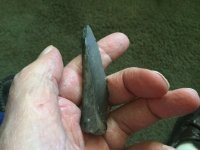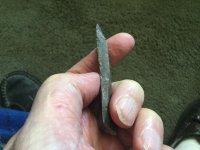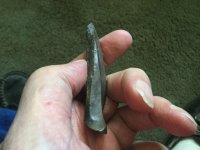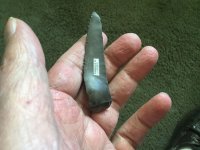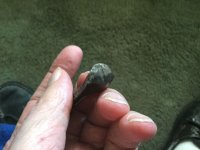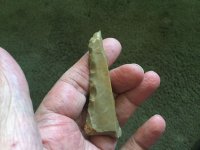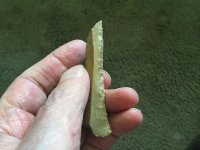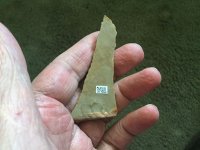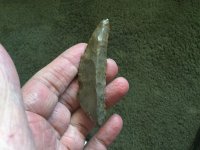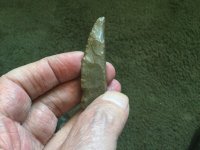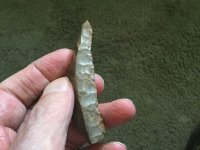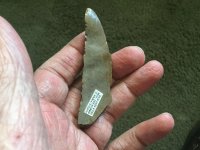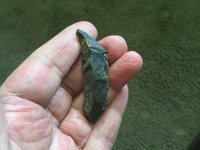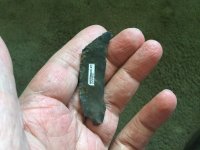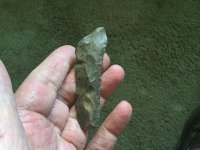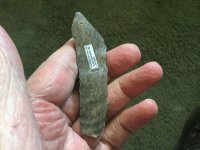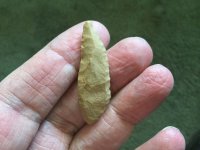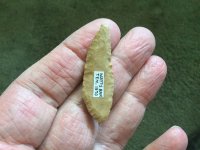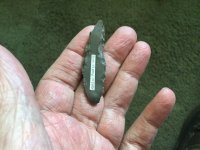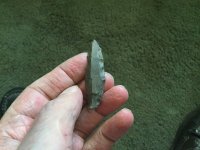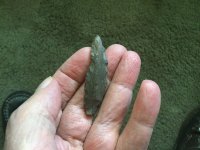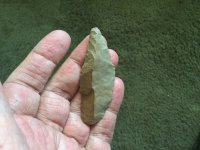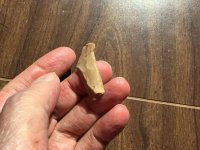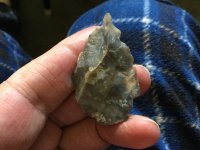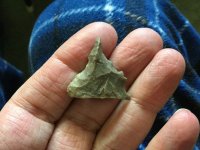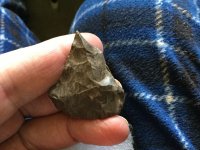Navigation
Install the app
How to install the app on iOS
Follow along with the video below to see how to install our site as a web app on your home screen.
Note: This feature may not be available in some browsers.
More options
You are using an out of date browser. It may not display this or other websites correctly.
You should upgrade or use an alternative browser.
You should upgrade or use an alternative browser.
Pointy Tools
- Thread starter uniface
- Start date
tomclark
Bronze Member
- Dec 18, 2006
- 1,177
- 1,641
- Detector(s) used
- ShadowX2, TEJON, Eyes, Pony Shovel
- Primary Interest:
- Other
Oh Man keep 'em comin!!
Tesorodeoro
Bronze Member
- Jan 21, 2018
- 1,306
- 2,040
- Primary Interest:
- All Treasure Hunting
Not just the show, but the “tell” as well.
It’s a change up here.
In my area it seems there were primarily only a handful of lithics used for flaked tools.
Obsidian, red/brown chert (or jasper..not sure), agate, and basalt.
I’m not sure I could tell where any of it originated unless it was some sort of exotic material unique to a specific area. Interesting how out east everyone seems to know what county/state a particular material came from. Maybe there is more to it than I’m understanding at the moment.
It’s a change up here.
In my area it seems there were primarily only a handful of lithics used for flaked tools.
Obsidian, red/brown chert (or jasper..not sure), agate, and basalt.
I’m not sure I could tell where any of it originated unless it was some sort of exotic material unique to a specific area. Interesting how out east everyone seems to know what county/state a particular material came from. Maybe there is more to it than I’m understanding at the moment.
Last edited:
Gravelbar32
Full Member
Thanks! Love to see those tools.
H.P.
Hero Member
Good examples with high quality flint.
uniface
Silver Member
- Thread starter
- #13
The sad part is the camera and the software en route sucks all the glossiness out of the flint, and shades everything to the rug color (greenish).
There's a soft luster that good flint that's ten or eleven K years old gets (even less) that I love. That doesn't much come across, either -- at least on this tablet I'm using to photograph them. It's velvety.
There's a soft luster that good flint that's ten or eleven K years old gets (even less) that I love. That doesn't much come across, either -- at least on this tablet I'm using to photograph them. It's velvety.
Last edited:
uniface
Silver Member
- Thread starter
- #14
Withoft (Shoop Site, 1952) didn't have a name for them either. "Convergeant tools" if you need one. Will take a better picture tomorrow, but this conveys the essential.
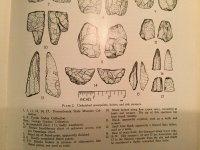
"Sidescrapers" doesn't really make it when the edges are knives.
One thing to note is that, though it may be completely removed by re-sharpening (nrs. 1, 2, 3 & 5 here, all of Witthoft's), the bulb of percussion is at the tip.

"Sidescrapers" doesn't really make it when the edges are knives.
One thing to note is that, though it may be completely removed by re-sharpening (nrs. 1, 2, 3 & 5 here, all of Witthoft's), the bulb of percussion is at the tip.
Last edited:
newnan man
Gold Member
The edge work on those blades are something else! I like all the different materials and they do have their specific areas they come from. Ohio had several types and was easily identified.
Top Member Reactions
-
 1913
1913 -
 1050
1050 -
 1019
1019 -
 998
998 -
 873
873 -
 859
859 -
 799
799 -
 745
745 -
 704
704 -
 588
588 -
 368
368 -
 366
366 -
 365
365 -
 343
343 -
 340
340 -
 339
339 -
E
332
-
 316
316 -
 305
305 -
 299
299
Users who are viewing this thread
Total: 2 (members: 0, guests: 2)
